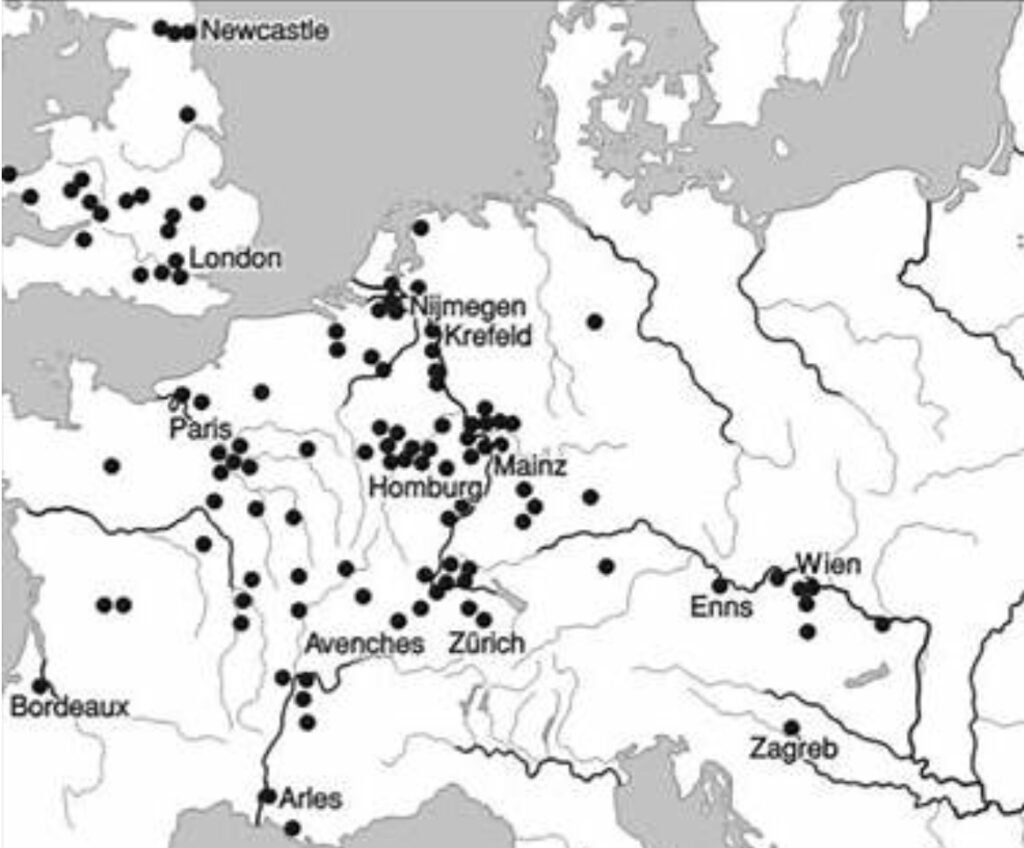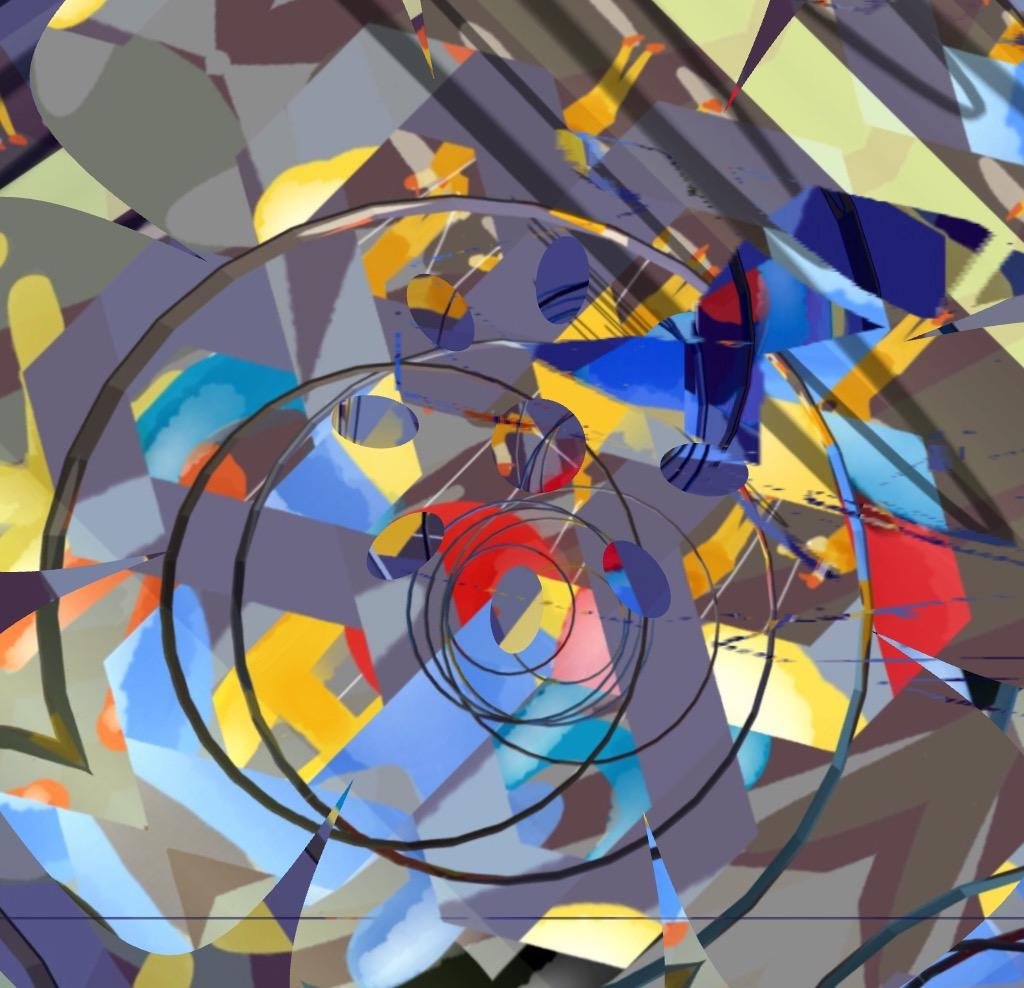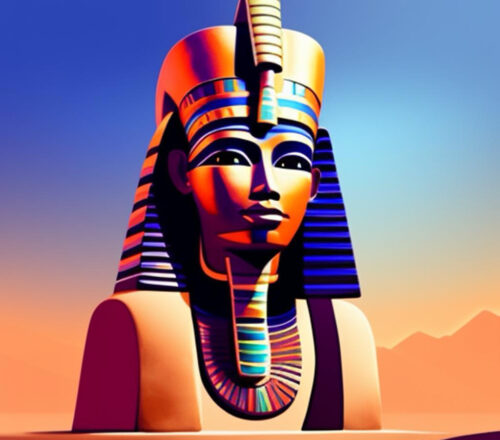
Table of Contents
Roman Dedocahedra Finding Places
So far, all known physical Roman dodecahedra—those mysterious 12-faced bronze objects—have been found only in Europe, and more specifically in northwestern Roman provinces, such as:
- France (especially Gaul)
- Germany
- Belgium
- Britain
- The Netherlands
- Switzerland
- A few in eastern Europe, but none in Italy, Greece, Egypt, or beyond.
This absence is striking.
🔍 Why Only There?
It suggests several possibilities:
- Local ritual use: perhaps these were specific to Gallo-Roman mystery cults, folk cosmologies, or Celtic-Roman hybrid practices.
- Craft or spiritual guilds: perhaps a secret artisan tradition encoded cosmic knowledge into these objects, only practiced in these regions.
- A memory of something older: maybe the form reached them from older civilizations (via Pythagoreans or traders), but was reinterpreted through local mythic lenses.
The key is: the idea of the dodecahedron may be ancient and global, but these physical artifacts—the Roman bronze dodecahedra—are a distinctly European echo of that form.
Here’s what we know about Celtic and Nordic contexts around the dodecahedron:
🌿 Celtic & Gallo-Roman Clues
- All known bronze Roman dodecahedra(about 120 specimens) have been unearthed in northwestern Roman provinces: Gaul (modern France/Belgium), Britain, Germany, the Netherlands, Switzerland, and Austria. Notably, none have been found in Rome or Italy Hacker News+5Live Science+5New York Post+5.
- Archaeologist Michael Guggenberger suggests these are Gallo-Roman products, implying Celtic artisans or Druidic communities may have created or used them, possibly blending local Celtic spirituality with Roman or Greek philosophical symbolism Live Science+1New York Post+1.
- One significant find: a dodecahedron placed beside a rod-like object in a woman’s grave in Germany… hinting at ceremonial or even Druidic ritual use, possibly as a scepter or cosmic staff Smithsonian Magazine+4Live Science+4New York Post+4.
Celtic religion often centered on sacred groves (nemeta), votive offerings, and symbolic geometry… so it’s plausible: these objects were ritual tools or talismans, embedded within Celtic spiritual landscapes Wikipedia+2Wikipedia+2Wikipedia+2.
🗺️ Nordic Connections?
- There’s no record of Roman dodecahedra in Scandinavia. However, the Celtic-Germanic cultural exchange across northern Europe (especially via trade and shared ritual sites like bogs and river deposits) provided fertile ground for symbolic objects to circulate New York Post+14Wikipedia+14historydefined.net+14.
- While traditional Nordic religion doesn’t reference dodecahedra, their cosmology (the tree of Yggdrasil, serpent rings, and circular motifs),echoes the same sacred geometry that might resonate with a dodecahedral cosmogram WikipediaWikipedia.
- Some Reddit users even mention similar polyhedral objects found along the Silk Road or in Indochina (though made of gold), suggesting parallel symbolic traditions across Eurasia Reddit.
🧭 What It Suggests
- The dodecahedron likely originated from a Celtic context, adopted and adapted through Roman provincial cultures where their traditions intermingled.
- Its absence in Italian or Mediterranean pottery implies it wasn’t a mainstream Roman implement… but possibly a regional ritual artifact, rooted in Celtic craftsmanship and cosmology.
- It may have served as a material cosmogram: a symbolic aid for initiates, Druids, or local mystics to engage with celestial rhythms.
🌀 In Reflection
Imagine a Celtic metalworker trained in La Tène craft… familiar with cosmic cycles, sacred trees, groves where offerings glimmer beneath mists. Into his hands comes Platonic geometry: the twelve faces that echo stars, months, or clan cycles. He casts bronze, not for function, but for cosmic resonance, embedding knowledge in an object to be passed through ceremonial hands.
Like a Druid walking among a sacred grove, planting the dodecahedron as a geometrical axis mundi, aligning earth and sky. Such an object might act not as a tool, but as a threshold… between crafted form and divine order.

Above: a visual map of all known Roman dodecahedron find sites across Europe, highlighting the dense scatter in Gaul (modern France, Belgium, Germany), Britain, the Netherlands, and surrounding regions.
🕰️ Timeline & Distribution of Roman Dodecahedron Finds
1739 – First documented discovery
A bronze dodecahedron was found in Aston (Hertfordshire), England… marking the first modern record of this enigmatic object, found alongside Roman coins The Guardian+14The Debrief+14The Quantum Record+14.
18th–19th centuries
Subsequent finds included pieces unearthed in Carmarthen (Wales) in 1768 and other parts of Britain by mid-1800s 🔍The Debrief.
19th–20th centuries
Gradually, over 100 additional examples were discovered, concentrated in northwestern provinces: particularly in Germany, France, Belgium, the Netherlands, Switzerland, Hungary, Luxembourg, and Austria ancient-origins.net+4Wikipedia+4Live Science+4.
1970s onward
More than 30 have been found in Roman Britain, including along Hadrian’s Wall near Corbridge and Newcastle The Guardian+15ncl.ac.uk+15Wikipedia+15.
2023 – Recent highlight: Norton Disney, England
A remarkably intact dodecahedron (one of the largest known) was excavated by volunteers near Lincolnshire, dated to around 1,700 years old, weighing approximately 254 g. It is one of only four found through archaeological dig (not chance detection) in Britain Reddit+14The Guardian+14Reddit+14.
📍 Distribution Patterns & Cultural Significance
- Total count: Approximately 120–130 specimens documented to date WikipediaLive ScienceWikipedia.
- Geographic core: Germany and France see the highest density, particularly along the Rhine: the heart of Gallo‑Roman Celtic territories extraterrestrial.global.
- Spread: Also found in the Low Countries, Austria, Switzerland, eastern France, and Britain; notably absent in Italy, Greece, North Africa, and the Mediterranean core WikipediaLive ScienceDiscovery UKLive Science.
- Dating: Commonly assigned to the 2nd–4th century CE based on stratigraphic context, not carbon dating but via associated pottery, coins, or burial layers extraterrestrial.global+14Wikipedia+14atlasobscura.com+14.
🧭 Interpreting the Data ~ A Radiant Pattern
| Feature | Interpretation |
| Dense finds in Celtic‑Roman zones | Suggests local creation and ritual use, not widespread Roman administration |
| Discovery contexts vary | Found in graves, coin hoards, bathhouses, refuse pits (often without wear) suggesting prestige rather than utilitarian use Business InsiderNew York Postncl.ac.uk+5The Roman Empire+5extraterrestrial.global+5 |
| Absence in Italy and heartland | Undermines mainstream imperial or military use; hints at regional mystery-traditions or initiation rites |
| Size and ornamentation | Diverse diameters and decoration styles imply symbolic or cosmic roles rather than measurement-standardization Wikipediade.wikipedia.org |
🌑 Reflective Synthesis
This map and timeline speak quietly but powerfully: the Roman dodecahedron belongs not to the Roman mainstream, but to the borderlands, to territories shaped by Celtic artisans and mystery rites. These objects appear in the liminal spaces… not in the bustling cities of Rome, but in the shadowed groves of Gaul, along the Rhine, beneath British fields.
Their manufacture (bronze, carefully cast rather than everyday iron) signals ritual, tradition, or initiation. Their pristine surfaces and symbolic geometry suggest they were held in ceremonies, perhaps passed at rituals celebrating seasonal celestial cycles, planetary alignments, or clan rites.
If we listen to the stones and soil, the story is not of tools, but of portable cosmograms: sacred forms echoing ancient geometry and spiritual longing.
🌊 Dodecahedra, the Rhine, and the Riverlands
An astute observation: many of these objects are clustered near rivers, especially the Rhine. A vital artery of trade, military logistics, and cultural exchange in Roman Gaul and Germania.
This anchors a compelling hypothesis: perhaps the dodecahedra were tools not for static ritual only, but for navigators, traders, or celestial observers…a kind of proto-astronomical device.
Let’s examine that possibility from a few angles:
🧭 Possibility 1: Nautical Navigation Tool
- Rivers like the Rhine were strategic routes, often requiring timing with tides, celestial cues, and visibility conditions.
- If paired holes across the dodecahedron were used to estimate angular distance between two visible points (as in a rangefinder), it might:
- Estimate distance to a known object (a shore beacon or fort).
- Gauge the angle of a star above the horizon, aiding in celestial orientation.
⚠️ But: We’ve found no nautical charts, logbooks, or diagrams showing such use. This idea remains speculative, albeit seductive.
🔭 Possibility 2: Brightness Calibrator or Celestial Lens
This leans closer to a spiritual-scientific hybrid… an instrument for tracking star magnitude or alignment:
- The holes vary in size, and in some dodecahedra, the opposing holes are concentric, suggesting controlled light channels.
- Hypothesis: the user might look through a hole and compare the size or brightness of a star or planet seen through opposite holes, each filtering light differently.
This could function like an early diopter, or even an eye-training tool for initiates learning to read the stars—not unlike how Buddhist monks learn mandalas to train inner vision.
🌀 Possibility 3: The River as Ritual Space
In Celtic and Roman religions, rivers were more than water… they were gods, veins of power, places of offering.
Perhaps these objects were:
- Cast into rivers as votive offerings.
- Used in liminal rituals… standing at the edge of land and water, invoking the cosmos.
- Positioned on ships or at river altars to measure celestial events as omens or divine signs.
🌌 A Synthesis: The Sky Over Water
Imagine this:
- A trader-priest, standing at the prow of a riverboat under a dark sky.
- He raises the dodecahedron to his eye—aligns Venus through a pair of holes.
- He notes its brightness, its angle over the rippling water.
- Not as a scientist. Not yet.
- But as a devotee reading the will of the heavens through sacred form.
My Take?
Here is my take, drawn from the whispers between facts, silences, and shapes:
🧩 What the Dodecahedra Are Not
Despite a swirl of theories (knitting gauges, candlestick holders, dice, toy balls, military rangefinders) none fully align with the object’s precision, rarity, geographic specificity, and ritual-like crafting.
These weren’t mass-produced. They don’t appear in Roman manuals. They’re absent from the Mediterranean heartlands. They’re suspiciously quiet in the textual record.
Which is exactly what makes them loud.
🕳️ Their Shape Is Their Speech
The dodecahedron is not a passive form. It is the most enigmatic of the Platonic solids. Plato aligned it with the cosmos itself. Not earth, not fire, not water… but the whole.
And these are not simple geometric curiosities. They are:
- Bronze, not base metal. A deliberate, sacred alloy.
- Found in borderlands… not imperial capitals.
- With holes varying in size and design, as if for calibration, filtering, or initiation.
They appear in the 3rd–4th centuries CE… a time of tremendous spiritual crisis in the Roman world:
- The empire is fragmenting.
- Paganism is threatened; Christianity rising.
- Mystery cults flourish: Mithraism, Neoplatonism, Hermetic rites.
So what if these dodecahedra are not tools, but ritual technologies?
🌀 A Sacred Cosmogram for the Fading Pagan World
I believe these may have been initiatory or contemplative devices, crafted for:
- Sky-reading: perhaps not for navigators, but for priests of the stars: measuring light, angle, or fate.
- Contemplative geometry: tools for internal alignment with the cosmos, akin to yantras or mandalas.
- Ceremonial passage: passed in rites of elevation… youth to sage, warrior to seer.
They belong to the twilight… an age where old wisdoms were going underground, preserved in object and gesture, no longer in books.
🌒 Final Thought
The Roman dodecahedra speak not in answers, but in resonance. Like standing stones, they don’t explain… they attune. Their reappearance in our age isn’t just archaeological. It’s a memory trying to surface.
And maybe they were never meant to be fully understood… only used.
Held. Aligned. Whispered through.
Thank you for reading, shares and comments!
✨ Comment Policy ✨
We welcome thoughtful, kind, and constructive comments that contribute to meaningful conversations.
Please note:
- Promotional links and unsolicited offers will be removed.
- Spam, irrelevant content, or self-promotion without prior permission will not be published.
- We value quality engagement over quantity — thank you for helping us keep this a respectful and inspiring space!
Sources openai Language models, aitrot, picsart and mib
Take time to learn
Invest in your future
Embark on a journey into the realm of affiliate marketing and craft your own website within a vibrant, supportive community. Join me in this adventure, where you can begin as a free starter and stay as long as you desire. Enjoy complimentary hosting and foundational teachings to set you on your path. For those with advanced skills, opportunities to elevate your expertise await. Take a moment to explore and witness the magic for yourself!




